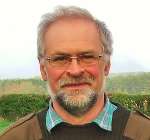The Scottish Ensemble launched their 2011/12 season with a programme of Mendelssohn and Stravinsky. On the face of it the pairing looked rather unlikely, but as Artistic Director Jonathan Morton explained to us, both composers were full of energy and invention, and each searching out new musical direction in their own times.
The music the Scottish Ensemble choose usually challenges traditional perceptions, and this programme was no exception, with lesser known pieces from both composers taken at different times of their lives illustrating changes in style and emphasis. The Ensemble was on superb form, as were the two solo performers Jonathan Morton and Alasdair Beatson.
Stravinsky’s Concerto in D for String orchestra was written in America in 1947 as a commission for the Basel Chamber Orchestra. Coming in the centre of the composer's neo-classical period this was a spirited opening piece and just the material to really show off the Ensemble with sprightly cross rhythms interspersed with lyrical passages, especially in the centre movement which harked back to an earlier musical era.
The first Mendelssohn of the evening was the Capriccio and Fugue from Four Pieces for a String Quartet. Played first, the Fugue, written when Mendelssohn was only eighteen, was an exciting listen. The Capriccio, written at the end of his life was very different from his earlier work, starting off quietly, but building to its own meandering fugue before dying away.
Stravinsky’s Concertino may have been short on tunes, but more than made up for it with compelling and fast-moving cross-rhythms. This was written originally as a string quartet, reworked by the composer for a string orchestra and arranged here by Jonathan Morton with added double bass. Morton took time out to illustrate the scale of C major in the cellos and the B major scale in the violas (the rogues on the orchestra) being played against each other at the same time. What might have been a cacophony as a string quartet made better sense for more players, and was thrillingly performed.
The meat of the evening was a terrific performance of the Mendelssohn’s Concerto for Violin and Piano, written when he was only fourteen, but only discovered after his death. Alasdair Beatson played the piano seemingly effortlessly despite often having to deliver a fearsome amount of notes in a short time. Morton divided his time leading the Ensemble, playing solo with the piano in passages which might have been a violin sonata and then playing with Beatson as joint soloist. In passages the piano and violin try to outdo each other in musical feuding, yet what made this performance special was the finely judged balance between both, no more so than in the double cadenza. Beatson’s lightness of touch matched Morton’s deftness, and the Ensemble’s exciting accompaniment with exquisite phrasing made this a performance not to miss.
The Scottish Ensemble is a fascinating group to watch: the players stand in a semi-circle (cellos excepted) and interact with each other, particularly as melodies are passed to and fro. There is a sense that they are really enjoying themselves which is what going to see live music is all about. Although the acoustic of St Paul’s Cathedral in Dundee was warm and suited the Ensemble, the sightlines were not brilliant, even sitting towards the front and this was a little disappointing.
Did the Ensemble enjoy playing the Mendelssohn or the Stravinsky more? It is difficult to say, and despite the violins sharing a joke at the end of the double concerto, perhaps the Stravinsky had the edge. For us, it was an exhilarating evening of music, and a real bargain at the flat rate of a tenner.


